Have you ever seen a Bm guitar chord in a song, then with a look of horror, you run off and never looked at the song again?
Ok, that might be an exaggeration, but a lot of guitarists fear the Bm guitar chord like it is the Freddie Krueger of chords. Yes, it can be a little difficult to play, but there are easier ways, as you’ll see below… And the fact is, the B minor chord is so useful and is featured in so many classic songs.
Below are 8 different but very useful ways to play Bm guitar chords and they are ordered from hardest to easiest (on average)…
Scroll down the page if you’re a beginner to find a suitable version for you…
How to Play B minor on Guitar
You’ll find all these versions of Bm have a slightly different flavour. Here we go, “Bm me up, Scotty”. Okay, enough bad jokes, let’s begin…
The Bm guitar chord for intermediate guitarists
Shape 1 – (Must know)
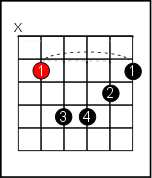
This is the most common shape and the one you will want to build up to. This version is based on the A minor shape. This chord is simply an A minor chord with a barre placed in front of it and moved up two frets.
This is the starting point AND probably the one I use the most.
Shape 2 – (The sometimes brutal six-string version)
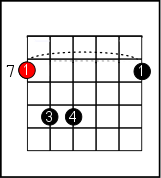
This version can be easier or harder than shape 1. It really depends on your finger strength, your four-finger independence and the action of your guitar. This one is based on the Em guitar chord shape and is played at the 7th fret.
You won’t play this one with many open chords, so it is slightly less useful than shape 1 but is still a must-know (eventually) shape. If you play this version at the first fret, it becomes an F minor, which is a very useful chord in its own right.
Shape 3 – (A slightly simpler version)
This is shape 2 but simplified a fraction. It’s still tough, but instead of barring across all 6 strings with the index finger, we are just barring across the G, B, and high E strings. You’ll still need some good finger independence between the index and ring/pinkie fingers.
This makes a great substitute for shape 2 when you still need the B note on the 7th fret high E string (e.g. for fingerpicking songs), but you struggle to barre across all six strings.
Shape 4 – (A four-string Bm)
This is very similar to shape 3 but easier. Instead of using the ring and pinkie fingers, we have simplified it to use just the ring finger along with the index finger playing the mini barre.
It’s still tricky, so make sure the action of your guitar is at the optimal height, and keep practising it in small doses. Just like shapes 2 and 3, when played at the first fret, it is an F minor, which is a handy chord to know.
If the above Bm shapes were a challenge, or you struggle with arthritis or finger dexterity issues, fear not, these next versions will be far easier…
The Bm guitar chord for beginners
Let’s tackle easier ways to play the B minor guitar chord now. These are much easier for beginners but they still take practice though, so be patient…
Shape 5 – (Recommended for beginners)
Shape 5 is based on shape 1 from above, but simplified. Notice how for this version, you don’t have to barre across string 5 through string 1. In fact, you don’t have to play the barre at all.
Each finger just plays 1 note. This version still sounds great and is super useful, so I recommend all beginners try to master this version. It will come in handy and is a nice way to build up to the tougher shape 1.
Shape 6 – (Super useful)
Shape 6 has to be one of the most useful. It is based on the A minor shape but no barre is needed at all. Instead, we are playing the top four strings with our four fingers. It isn’t easy, but it still sounds cool. Just be sure to get on the tips of your fingers.
Shape 7 – (Bm chord guitar – the easiest version?)
This is like the previous shape, but it is a little easier. We only use three fingers of our fretting hand, and instead of playing the D string at the 4th fret with the pinkie, we play it as an open string.
For some, this makes the shape much easier. For others, it just doesn’t sound as good as the previous shape 6.
This is probably due to the fact that this is a “chord inversion”. If you don’t know, a chord inversion is where the root note is no longer the bass note. For example, for any B minor chord, your bass note would nearly always be a B note, just like the other above shapes.
…But for this shape, the bass note is a D note.
I love chord inversions, but they tend to sound better when picked rather than strummed, so this shape might not be as useful as the others, particularly if you are a big hearty strumming guitarist.
Shape 8 – (A tricky bonus version)
Oooh, what do we have here then?!
This is very much a bonus shape that is the icing on the cake.
This is also a chord inversion and a very smooth one at that. You might have noticed we are playing shape 8 right up the fretboard, hence why it is optional.
This shape is a nice jangly higher-up shape, which will suit some picking or some electric noodling with a bit of delay. It will also sound cool with some Johnny Marr- or The Cure-type jangly strumming, particularly if you have another guitarist playing the lower version of the chord.
Either way, this is an optional extra and something a bit different to add to your repertoire of playing. This one sounds very cool, especially when jamming with others.
…Okay, before we wrap this up, here’s some key advice:
Choose one version of the Bm guitar chord and stick with it!
There are, of course, plenty more ways of playing the Bm guitar chord, but these are the most useful.
The thing is, those songs on the above list aren’t all that hard to play as long you can play one of the versions of B minor, some open chords and change between them.
A while back, when I first started teaching, I had a student who really didn’t want to play a B minor chord. Any time a song would come up with this chord in it, she would say ‘no’ to herself and learn something else instead.
There seemed to be a lot of songs she liked that had the B minor in them too.
I then decided she needed a push and taught her the above ways to play B minor. I made sure she practised these in the lessons and at home, and in a few weeks, she was playing them confidently and was no longer afraid of the B minor like it was the Freddie Krueger of chords.
She, in fact, realised it was more like the BFG – kinda scary at first, but actually a really good friend.
Why is the B minor chord so important?
The Bm chord is important simply because it features in the keys of G Major and D Major, which are two of the most common keys on guitar.
Therefore, you are bound to come across this chord sooner or later.
You can use a capo for certain songs to avoid a B minor. For instance:
- If you are trying to play a song such as “I Started a Joke,” by the Bee Gees (and covered by Faith No More), you wouldn’t need a capo if you could play a G, Bm, C, D.
- If you couldn’t play the Bm, you could put a capo on at fret 7 and instead play the chords of C, Em, F, G.
- This would then transpose those chord shapes into the correct key to play the song.
That’s all well and nice, but a capo on at the 7th fret makes the guitar sound a bit thin and weedy. Sometimes this works and is fine, but for some songs, it sounds bad.
This is especially the case when you don’t have other instruments around you to ‘fill out’ the bass. Sometimes you’ll also want or need a lower note than is available with a capo. For example, if the capo is on fret 7, the lowest note now available to you is the 7th fret of the low E string. If a song had a section that needed a low G note on the 6th string for a riff or melody of some sort, this would be impossible to play.
Okay, the above is all getting a bit heavy, but the point is, as I’m sure you can see, there are multiple reasons to expand your chord vocabulary and learn more chords.
If you have the basic C, A, G, E, D chords down, then start moving forward and learn the awesome B minor chord as well as all 32 essential chords.
I specialise in teaching adult beginner students age 40+ acoustic guitar. Over the 12+ years I’ve taught them, we’ve covered a lot of songs.
There are a lot of songs that use the Bm chord, and here’s just a handful…
- The Commodores/Faith No More – “Easy”
- The Bee Gees – “I Started a Joke”
- The Cure – “Boys Don’t Cry”
- Julie Andrews – “Feed the Birds” (from Mary Poppins)
- Cliff Richard – “Silhouettes” (personally, I’m not sure this is a classic)
- David Bowie – “Ziggy Stardust” (now I love this guy)
- The Beatles – “A Hard Day’s Night”
- Brian Adams – “Summer of ’69”
- Coldplay – “The Scientist”
- The Eagles – “Hotel California”
Is the Bm chord esssential?
Yes and no.
If you haven’t got the basic five chords of CAGED learnt to a decent standard yet, don’t worry too much about the B minor.
You can come back to it after you have learnt some simple songs and had some fun on the guitar!
For everyone else, learn the B minor. It’s a lovely-sounding chord, and one of my favourite chord changes is from G Major to B minor. This chord change sounds beautiful and stands out when I hear it on the radio. So often the G Major chord goes to a D, C or Em, so hearing that unique but beautiful change to the B minor is music to my ears.
So take the way that is easiest for you. Learn one of the above songs to start with. Have fun!
Now you know how to play a Bm guitar chord.
Try all the shapes, stick with one shape and get learning some songs that use this great chord.
One of the advantages of learning tricky chords is that when you go back to your bog-standard open chords, they will seem easier than before.
This is just another great reason to always push your guitar playing to the next level.
Do leave a comment below and let me know what you think. I’m Dan Thorpe and I specialise in teaching adult students how to fingerpick, strum, and play songs with ease and enjoyment…
If you enjoyed this article, then below you can check out this free mini-course for frustrated guitarists age 40+ needing clear and concise lessons, and fast results.
MY NEWS IN YOUR INBOX
NEWSLETTER SIGNUP
Fix Your Bad Habits, Elevate Your Technique, And Learn Three Stunning Songs With My Two Free And Exclusive eBooks.
[Not Available Anywhere Else]

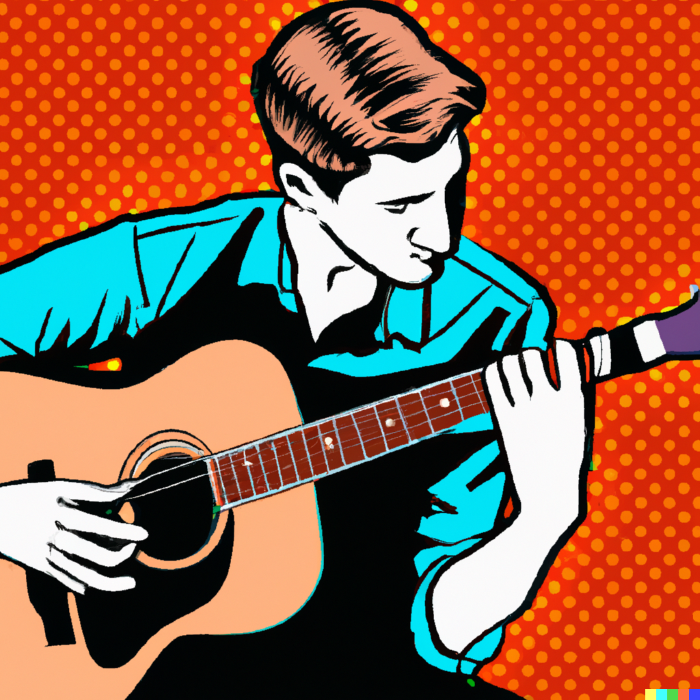
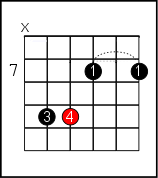
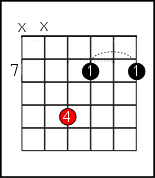
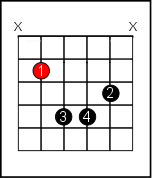
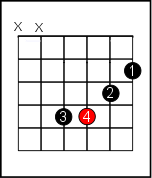
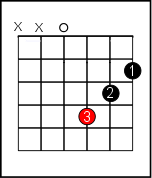
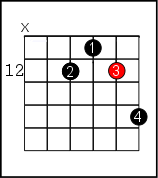
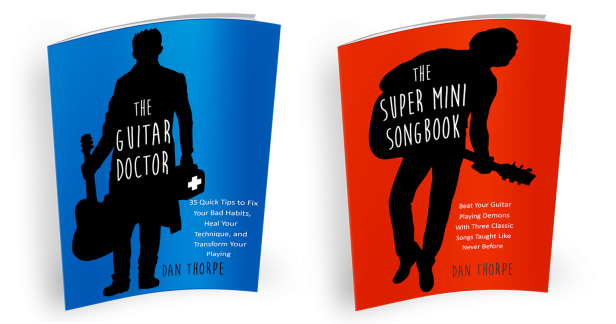
Personally I find Bmajor much more difficult to play than Bminor. I can play Bminor several different ways. As far as using easier versions of chords as you are learning to play, I don’t see a problem w/ it. In fact, in one song I learned made famous by John Prine (called “Hello In There”), he plays Bminor exactly as you showed in Shape #7. So even professional musicians at times resort to using simpler ways to play chords. Keep up the good work Dan & ignore the naysayers!
Thanks for the comment, Andrew. That`s a great point you make about professional musicians using easier versions of chords. Sometimes it is because it gives a different flavour and sometimes because it is easier for them in the song or for them in general. Great point and nice to hear from you. Dan
This is incredibly useful and valuable. I’ve been learning (self taught from YouTube and people like yourself) for just over a year. Thank you and look forward to the next post.
Thanks Adam. Glad you have found it useful. Keep up the good work. Dan
You have done a very thorough analysis of this and the F chord. It is so nice of you to share you knowledge and experience with all of us.
Thanks, April. It is my pleasure. Keep on strumming!
Can we say that Shape 7 is a Bm/D chord??
As well, Shape 8 suppose to have a ‘x’ on the 5th string or else the chord becomes a Bm7..
[…] while back I showed you multiple ways to play the tricky chord of B minor which is also a challenging chord to play. The chord of F is a more common chord as it is in the […]
[…] series continues where we let off with the how to play the F chord and getting started with the B minor chord series so you may want to check those posts out once you have read […]
[…] few weeks ago, I shared my post of 8 ways to play the B minor chord. It received a lot of up-votes (a Reddit user`s way of giving it the thumbs up) and some positive […]